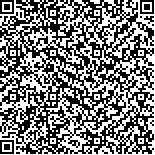| Quote
: |
范瑜洁,聂颖,陈安,殷坚,杨奔,李亮.补阳还五汤对移植BMSCs在脊髓损伤局部存活、增殖及分化的影响[J].湖南中医药大学学报英文版,2018,38(11):1321-1325.[Click to copy
] |
|
| |
|
|
| This paper
:Browser 2818times Download 1542times |
| 补阳还五汤对移植BMSCs在脊髓损伤局部存活、增殖及分化的影响 |
| 范瑜洁,聂颖,陈安,殷坚,杨奔,李亮 |
| (湖南省脑科医院中医科, 湖南 长沙 410007;湖南中医药大学第一附属医院脊柱外科, 湖南 长沙 410007;湖南中医药大学人体解剖学教研室, 湖南 长沙 410208;湖南中医药大学中医诊断学湖南省重点实验室, 湖南 长沙 410208) |
| 摘要: |
| 目的 探讨补阳还五汤(Buyang Huanwu Decoction,BYHWD)对移植骨髓间充质干细胞(bone marrow mesenchymal stem cells,BMSCs)在脊髓损伤局部存活、增殖及分化的影响。方法 将60只雄性SD大鼠随机分为5组:正常组、气虚血瘀组、BYHWD组、BMSCs组、BYHWD+BMSCs组,每组12只。除正常组以外所有大鼠均行脊髓损伤(spinal cord lnjury,SCI)气虚血瘀证造模,并予以相应干预,连续28 d。通过斜板实验观察前肢运动功能恢复情况,免疫组织化学法检测脊髓局部BrdU、Nestin和GFAP的表达。结果 术后14 d、28 d两个时间点,BYHWD+BMSCs组斜板实验评分及前肢使用率均高于气虚血瘀组(P<0.05),BYHWD组、BMSCs组相应数据则低于BYHWD+BMSCs组(P<0.05)。免疫组化显示:正常组、气虚血瘀组、BYHWD组未见BrdU阳性细胞表达,BMSCs组仅见少量表达,BYHWD+BMSCs组可见大量表达。正常组可见较少Nestin阳性细胞,气虚血瘀组Nestin阳性细胞应激性增多,BYHWD、BMSCs组及BYHWD+BMSCs组则明显增多,且BYHWD+BMSCs组多于BYHWD、BMSCs组(P<0.01)。BYHWD、BMSCs组及BYHWD+BMSCs组GFAP表达低于气虚血瘀组(P<0.01);BYHWD、BMSCs组GFAP表达高于BYHWD+BMSCs组(P<0.01)。结论 BYHWD能促进脊髓损伤后移植的BMSCs在脊髓局部存活、增殖并向神经干细胞方向分化。 |
| 关键词: 补阳还五汤 骨髓间充质干细胞 脊髓损伤 气虚血瘀证 红核脊髓束 |
| DOI:10.3969/j.issn.1674-070X.2018.11.023 |
| Received:January 16, 2018 |
| 基金项目:国家自然科学基金资助项目(81302899),湖南省科技厅科技计划重点项目(2013SK2023),湖南省中医药科研计划项目(2013111),湖南中医药大学中医诊断学国家重点学科开放基金(2014-37) |
|
| Effect of Buyang Huanwu Decoction on the Survival, Proliferation, and Differentiation of Transplanted Bone Marrow Mesenchymal Stem Cells After Spinal Cord Injury |
| FAN Yujie,NIE Ying,CHEN An,YIN Jian,YANG Ben,Li Liang |
| (Department of Traditional Chinese Medicine, Brain Hospital of Hunan Province, Changsha, Hunan 410007, China;Department of Spine Surgery, The First Affiliated Hospital of Hunan University of Chinese Medicine, Changsha, Hunan 410007, China;Department of Human Anatomy, Hunan University of Chinese Medicine, Changsha, Hunan 410208, China;Hunan Provincial Key Laboratory of Diagnostics of Traditional Chinese Medicine, Hunan University of Chinese Medicine, Changsha, Hunan 410208, China) |
| Abstract: |
| Objective To investigate the effect of Buyang Huanwu Decoction (BYHWD) on the survival, proliferation, and differentiation of transplanted bone marrow mesenchymal stem cells (BMSCs) after spinal cord injury (SCI). Methods A total of 60 male Sprague-Dawley rats were randomly divided into normal group, Qi deficiency-blood stasis group, BYHWD group, BMSCs group, and BYHWD+BMSCs group, with 12 rats in each group. All rats except those in the normal group were used to establish a model of SCI with Qi deficiency and blood stasis, and corresponding intervention was given for 28 consecutive days. The inclined plate test was used to observe the recovery of motor function of the forelimb, and immunohistochemistry was used to measure the local expression of 5-bromo-2'-deoxyuridine (BrdU), nestin, and glial fibrillary acidic protein (GFAP). Results On days 14 and 28 after surgery, the BYHWD+BMSCs group had significantly higher score of inclined plate test and rate of use of forelimb than the Qi deficiency-blood stasis group (P<0.05), while the BYHWD group and the BMSCs group had significantly lower data than the BYHWD+BMSCs group (P<0.05). Immunohistochemistry showed that there were no BrdU-positive cells in the normal group, the Qi deficiency-blood stasis group, and the BYHWD group; only a small number of BrdU-positive cells were observed in the BMSCs group, and a large number was observed in the BYHWD+BMSCs group. A small number of nestin-positive cells were observed in the normal group; there was a slight increase in the number of nestin-positive cells due to stress in the Qi deficiency-blood stasis group and a significant increase in the BYHWD group, the BMSCs group, and the BYHWD+BMSCs group, and the BYHWD+BMSCs group had a significantly higher number than the BYHWD group and the BMSCs group (P<0.01). The BYHWD group, the BMSCs group, and the BYHWD+BMSCs group had significantly lower expression of GFAP than the Qi deficiency-blood stasis group (P<0.01), while the BYHWD group and the BMSCs group had significantly higher expression of GFAP than the BYHWD+BMSCs group (P<0.01). Conclusion BYHWD can enhance the survival and proliferation of transplanted BMSCs in the spinal cord and promote their differentiation into neural stem cells. |
| Key words: Buyang Huanwu Decoction bone marrow mesenchymal stem cell spinal cord injury Qi deficiency and blood stasis rubrospinal tract |
|

二维码(扫一下试试看!) |
|
|
|
|


